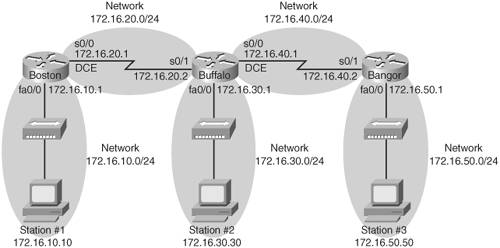Configuration Example: Single-Area OSPF
| Figure 11-1 shows the network topology for the configuration that follows, which shows a single-area OSPF network configuration using the commands covered in this chapter. Figure 11-1. Network Topology for Single-Area OSPF Configuration Boston Router
Buffalo Router
Bangor Router
|
EAN: 2147483647
Pages: 261